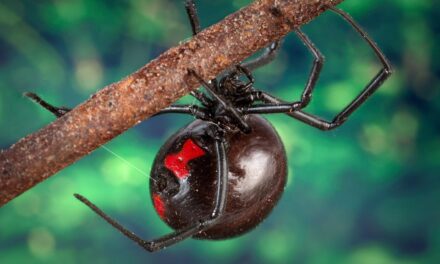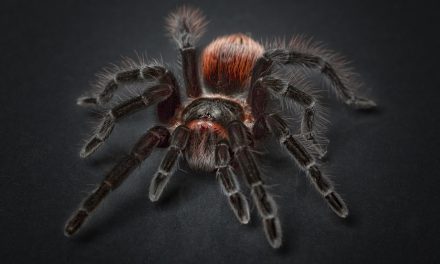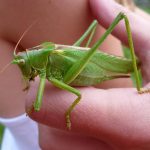The best jumping spider enclosure is one that is suited to its most natural habitat. They live in various habitats, from tropical forests to scrubland, deserts, and mountainous regions. You will need to research the particular species, see what climate and temperatures they live in, and then try to recreate them in your chosen enclosure. This article will tell you what a jumping spider is, what they eat, and the best enclosure to keep it in.
What is a jumping spider?
Jumping spiders belong to the Salticidae family; there are over 6,000 species, making it one of the largest spider families. Jumping spiders have excellent vision because they have four pairs of eyes, with one set being larger than the others. They use their eyes for courtship, hunting, and navigation.
Jumping spiders typically move unobtrusively and relatively slowly, but most species are capable of very agile jumping movements, hence the name jumping spider. They usually use jumping movements to move from object to object, but sometimes they jump in response to sudden movement or predatory threats. When they jump, they leave a silk line that they can use to climb back to their starting position if the jump were to fail, which is handy if you intend to keep them as a pet. Some jumping spiders also use this line to descend on prey without being seen.
Jumping spiders are hunters, which means, unlike most spiders, they don’t use their web to catch prey. They chase after it, and having the ability to jump twice the size of your body length comes in very handy when you are chasing after your meal.

Regal jumping spiders
Regal jumping spiders like a relatively dry environment and can live quite happily at room temperature without an added heat source. They do not require a water bowl or any other type of humidity, except some light misting on the side of the enclosure, which you should do every few days. When misting the enclosure, you need to be very careful not to spray water onto the spider directly. You also need to be cautious of big water droplets; spiders breathe through book lungs, which are found on the underside of their abdomen. Because of this, if they get too wet, they can drown.
Best jumping spider enclosures
When creating your jumping spider enclosure, you can make it a little busier than a regular spider enclosure. You can add platforms in the form of cork bark or twigs. You can also add foliage and flowers; your spider will love to explore his or her new surroundings, but while your jumping spider is small, you just need to keep it as simple as possible.
It is essential to know that this spider species likes to create its web at the top of the enclosure and not on the floor as most spiders do. You will need an enclosure that you can open without destroying the web every time.
I find the best enclosures are ones that are purpose-built with an opening at the bottom instead of the top. If you are using a top-opening enclosure, you will need to glue something to the lid where your spider can create a web without it being disturbed every time it is opened; a small measuring cup or piece of plastic tubing will do the job. Jumping spiders should be kept separate; males and females will fight over resources, and they will kill each other. A happy jumping spider is a solitary jumping spider.
Jumping spiders like the light. You must set up your enclosure where there is plenty of light. Please remember not to place the spider in direct sunlight as this can cause temperatures in the enclosure to spike. If you don’t have a nice light place for your spider, you can use artificial lighting, remembering to turn it off nightly to represent its natural environment.
Best jumping spider enclosures
Are jumping spiders friendly?
Jumping spiders make fantastic pets due to the fact that they are curious and friendly. It may take a little while for your jumping spider to trust you, but once they do, they will be more than happy to jump onto your hand. Spend a few minutes each day with your spider, and soon enough, he/she will willingly jump onto your hand. Don’t be worried if your spider isn’t very social or curious, as some spiders just prefer not to interact.
Some jumping spiders like to investigate their surroundings, so it is OK to let your spider out onto a surface to investigate. You can make your new friend a little jungle gym if you like; it is super cute to watch your spider jump from place to place. Jungle gyms are also a great way to capture some macro photography of your new friend.
If you need to move your spider for any reason, you can use a small paintbrush or a cotton bud to encourage it to move; try to be as gently as possible without spooking it, and it will generally move without issue. Don’t try to pick your spider up as you hurt them. Let them walk onto your hand.
Spider phobia
Lots of people are using jumping spiders as a way to overcome their phobia of spiders, which may seem really strange as they look like a spider, they act like a spider, they are hairy like a spider, so how can you not be scared of one if you have a spider phobia? The answer to that is simple. They are the cutest darn spiders you will ever see, and people are falling in love with them because they are super cute. The jumping spider is so cute; it helps people not be afraid of other spiders. How cool is that?
What do jumping spiders eat?
You can feed your spider every two-three days; they can eat a range of live insects, including;
- Maggots
- D. Melanogaster
- Moths (Wax Worms)
- D. Hydei Fruit Flies
- Curly Wing Fruit Flies
- House Flies
- Blue Bottle Flies
- Green Bottle Flies
- Soldier Flies (Calci Worms)
- Cockroaches
- Crickets
- Mealworms
- Wax Worms

Some insects can cause injury to your spider; they can even kill it. It is essential not to leave insects like cockroaches or crickets in the enclosure if the spider doesn’t eat them soon after.
If you are feeding these insects to your spider, you should consider the size of the spider and the prey. Always provide your spider with prey that is smaller than it to avoid the risk of harm.
You should never feed your spider with insects you have caught yourself, as they may be contaminated with insecticides or parasites. You may not have thought about it, but insects like ants, beetles, and other types of spiders may be poisonous to your spider. For instance, ants can bite and even spray acid that can harm or kill your spider. Always use shop-bought food sources that are suitable to be fed to a jumping spider.
Moulting
Like all spiders, jumping spiders moult as they grow. Moulting is a process where they completely shed the outer layer of skin (exoskeleton), revealing a new one underneath. A moult looks identical to the spider. The first time you see it, it can be quite eerie, but it is fascinating to watch.
A well-fed jumping spider will typically moult its exoskeleton on average every three weeks. As the spider grows, the time between moults will get longer. When it is going to moult, the spider will make what is called a moulting hammock. This is similar to their regular hammock, but it will be a lot thicker and whiter.
The moulting hammock is used to protect them during and after the moult. When a spider moults, it’s exoskeleton is relatively soft, so it will remain in the moulting hammock until it hardens; this could be a few days.
Never try to force your spider out of the hammock before it is ready; this could be fatal. When your spider is in the hammock, you will still need to mist the sides of the enclosure and carefully mist the hammock; this will help the spider complete a full moult without any complications.
Avoid offering any food while the spider is in moult, as this is when it’s in its most vulnerable state; insects can easily kill your spider during this time, so you will need to wait for the spider to come out of the hammock and then you can offer it food.

Important information
When buying a spider of any kind, you should avoid buying adult spiders. The reason for this is that unscrupulous breeders are selling spiders that have been snatched from their natural habitat. If you purchase an adult, you won’t know the spider’s age, and it won’t be tame. It is better to raise a spider from a spiderling bred in captivity than to buy a fully grown adult.
Jumping spiders typically live for around 8–14 months, so an adult jumping spider is nearing the end of its life, plus you will be missing out on that precious bonding time if you purchase an adult. Some spiders live for 15-20 years, but you won’t know how long your adult spider will live if it’s wild-caught.















